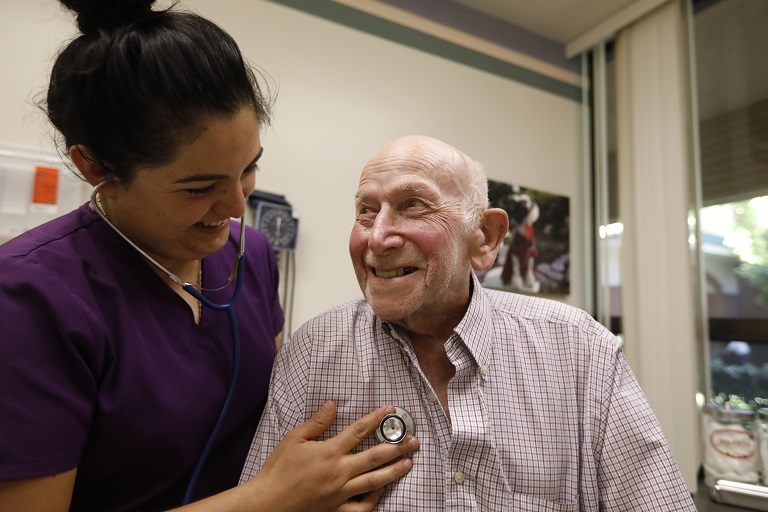Staying Up to Date with Nursing Home Operations and Reporting
There has been a great deal of confusion about what it means to be up to date with COVID-19 vaccination, and for good reason. Below, LeadingAge describes how the confusion came about and what it means for nursing homes.
What’s the Backstory on “Up to Date” Definitions?
On May 19, the Centers for Disease Control & Prevention (CDC) strengthened its booster recommendations to state, among other recommendations, that individuals aged 50 years and older should receive a second COVID-19 booster. This strengthened recommendation effectively changed the definition of what it means to be “up to date” with COVID-19 vaccination, but the roll out was not all that smooth for healthcare providers. On May 20, the Interim Clinical Considerations for the Use of COVID-19 Vaccines and the Stay Up to Date pages on the CDC website were both updated, but the definitions of “up to date” on these pages differed from one another.
On May 24, LeadingAge was able to confirm that the Centers for Medicare & Medicaid Services (CMS) would follow the definition on the Stay Up to Date page, which stated that an individual aged 50 years and older needed a second booster in order to be considered up to date with COVID-19 vaccination. On that same day, CDC once again updated their website so that the definition for up-to-date was consistent across recommendations.
However, there remains one circumstance impacting nursing homes under which the definition of up-to-date continues to cause confusion. On May 30, CDC released updates to the National Healthcare Safety Network (NHSN) system Long-Term Care Facility (LTCF) COVID-19 Module and Healthcare Personnel & Resident COVID-19 Vaccination Module into which nursing homes report weekly. These updates included new data elements requesting weekly cumulative totals of individuals who are up to date with COVID-19 vaccination. As noted in the module, “up to date” for reporting purposes through June 26 does not require a second booster.
LeadingAge confirmed this definition with CDC and was informed that because NHSN data is part of the surveillance function at CDC, the surveillance definition of “up to date” is utilized. Surveillance definitions are used to assess trends over time, so CDC needs to be able to standardize criteria and apply definitions consistently across populations and time. For the purpose of NHSN surveillance tracking, the definition must remain stable for a reporting quarter, regardless of whether CDC’s clinical considerations and definition of “up to date” changes. NHSN’s surveillance definition of up-to-date will be updated with the first week of 2022 Quarter 3 reporting (June 27 – July 3).
What Does This Mean for Members?
Nursing home providers are essentially having to follow 2 separate definitions of “up to date” for the next 2 weeks until you have completed required weekly reporting for the week ending June 26, 2022.
When tracking and reporting to NHSN, nursing homes will utilize the NHSN surveillance definition of “up to date” found here and within the NHSN reporting modules. Under this definition, an individual is not required to have a second booster in order to be considered up-to-date with COVID-19 vaccination.
When determining nursing home operations, such as quarantine for new admissions/readmissions or residents with close contact exposure, work restrictions for staff with high-risk exposure, or routine screening testing of staff based on community transmission rates, nursing homes will utilize the definition of up to date found on the CDC’s Stay Up to Date page.
Where does this leave us with CMS and State Survey Agencies? CMS is aware of the 2 different definitions. CMS upholds the definitions from CDC and understands that, for example, the number of staff who are exempt from routine screening testing will be different than the number of staff reported to NHSN as “up to date”. As with most other aspects of operations, an important factor will be whether the nursing home has a process for tracking vaccination status and applying recommendations accordingly.
Separately, LeadingAge has advocated to CMS for changes in nursing home operations that would address many of the concerns we are hearing about the new definition of up-to-date. We will continue to share information as it becomes available.

Most Recommended
October 15, 2025
 Shutdown Week Three: Impact of Ongoing Closure on Affordable Housing
Shutdown Week Three: Impact of Ongoing Closure on Affordable Housing
December 10, 2025
Fiscal Year (FY) Funding 2026
October 07, 2025
Immigrant Workforce Matching Program Brings Workforce Relief
Recently Added
December 19, 2025
House Moves Forward on Affordable Housing Reforms
December 19, 2025
White House Cannabis EO Paves Way for Research, Access
December 19, 2025
LeadingAge Urges DHS to Maintain "Public Charge" Guardrails
December 18, 2025



